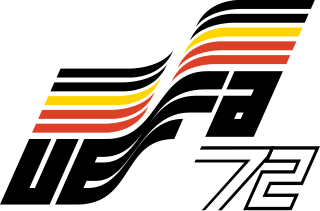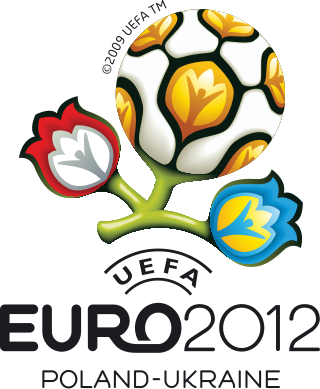Standings
| Rank | Team | Pld | W | D | L | GF | GA | GD | Pts |
|---|---|---|---|---|---|---|---|---|---|
| 1 | 6 | 5 | 0 | 1 | 18 | 3 | +15 | 10 | |
| 2 | 6 | 4 | 1 | 1 | 17 | 4 | +13 | 9 | |
| 3 | 6 | 1 | 1 | 4 | 3 | 21 | −18 | 3 | |
| 4 | 6 | 1 | 0 | 5 | 3 | 13 | −10 | 2 |
Group 4 consisted of four of the 32 teams entered into the European zone: [1] Albania, East Germany, Finland, and Romania. These four teams competed on a home-and-away basis for one of the 9.5 spots in the final tournament allocated to the European zone, with the group's winner claiming the place in the finals.
| Rank | Team | Pld | W | D | L | GF | GA | GD | Pts |
|---|---|---|---|---|---|---|---|---|---|
| 1 | 6 | 5 | 0 | 1 | 18 | 3 | +15 | 10 | |
| 2 | 6 | 4 | 1 | 1 | 17 | 4 | +13 | 9 | |
| 3 | 6 | 1 | 1 | 4 | 3 | 21 | −18 | 3 | |
| 4 | 6 | 1 | 0 | 5 | 3 | 13 | −10 | 2 |
| East Germany | 5–0 | |
|---|---|---|
| Kreische Sparwasser Streich | Report |
| East Germany | 2–0 | |
|---|---|---|
| Streich Sparwasser | Report |
| Albania | 1–4 | |
|---|---|---|
| Bizi | Report | Dumitru Dumitrache Țarălungă |
| Romania | 1–0 | |
|---|---|---|
| Dumitrache | Report |
| Finland | 1–5 | |
|---|---|---|
| Manninen | Report | Streich Löwe Ducke Kreische |
| East Germany | 2–0 | |
|---|---|---|
| Bransch | Report |
| Romania | 9–0 | |
|---|---|---|
| Dumitru Marcu Sandu Dumitrache Pantea Georgescu | Report |
| Albania | 1–4 | |
|---|---|---|
| Gjika | Report | Streich Löwe Sparwasser |

The 1974 FIFA World Cup was the 10th FIFA World Cup, a quadrennial football tournament for men's senior national teams, and was played in West Germany between 13 June and 7 July. The tournament marked the first time that the current trophy, the FIFA World Cup Trophy, created by the Italian sculptor Silvio Gazzaniga, was awarded. The previous trophy, the Jules Rimet Trophy, had been won for the third time by Brazil in 1970 and awarded permanently to the Brazilians.

The 1972 UEFA European Football Championship final tournament was held in Belgium. This was the fourth UEFA European Championship, held every four years and endorsed by UEFA. The final tournament took place between 14 and 18 June 1972.

The 2012 UEFA European Football Championship, commonly referred to as UEFA Euro 2012 or simply Euro 2012, was the 14th European Championship for men's national football teams organised by UEFA. The final tournament, held between 8 June and 1 July 2012, was co-hosted by Poland and Ukraine, and was won by Spain, who beat Italy in the final at the Olympic Stadium, Kyiv, Ukraine.
Group 1 consisted of five of the 34 teams entered into the European zone: Albania, Austria, Bulgaria, Finland, and West Germany. These five teams competed on a home-and-away basis for two of the 14 spots in the final tournament allocated to the European zone, with the group's winner and runner-up claiming those spots.
Group 4 consisted of five of the 34 teams entered into the European zone: England, Hungary, Norway, Romania, and Switzerland. These five teams competed on a home-and-away basis for two of the 14 spots in the final tournament allocated to the European zone, with the group's winner and runner-up claiming those spots.
Group 5 consisted of five of the 34 teams entered into the European zone: Denmark, Greece, Italy, Luxembourg, and Yugoslavia. These five teams competed on a home-and-away basis for two of the 14 spots in the final tournament allocated to the European zone, with the group's winner and runner-up claiming those spots.
Group 1 consisted of four of the 32 teams entered into the European zone: Cyprus, Denmark, Poland, and Portugal. These four teams competed on a home-and-away basis for one of the 8.5 spots in the final tournament allocated to the European zone. The spot would be assigned to the group's winner.
Group 2 consisted of four of the 32 teams entered into the European zone: England, Finland, Italy, and Luxembourg. These four teams competed on a home-and-away basis for one of the 8.5 spots in the final tournament allocated to the European zone, with the group's winner claiming the spot.
Group 3 consisted of four of the 32 teams entered into the European zone: Austria, East Germany, Malta, and Turkey. These four teams competed on a home-and-away basis for one of the 8.5 spots in the final tournament allocated to the European zone. The spot would be assigned to the group's winner.
Group 4 consisted of four of the 32 teams entered into the European zone: Belgium, Iceland, Netherlands, and Northern Ireland. These four teams competed on a home-and-away basis for one of the 8.5 spots in the final tournament allocated to the European zone. The spot would be assigned to the group's winner.
Group 6 consisted of three of the 32 teams entered into the European zone: Norway, Sweden, and Switzerland. These three teams competed on a home-and-away basis for one of the 8.5 spots in the final tournament allocated to the European zone. The spot would be assigned to the group's winner.
Group 7 consisted of three of the 32 teams entered into the European zone: Czechoslovakia, Scotland, and Wales. These three teams competed on a home-and-away basis for one of the 8.5 spots in the final tournament allocated to the European zone. The spot would be assigned to the group's winner.
Group 1 consisted of four of the 32 teams entered into the European zone: Austria, Hungary, Malta, and Sweden. These four teams competed on a home-and-away basis for one of the 9,5 spots in the final tournament allocated to the European zone, with the group's winner claiming this spot.
Group 2 consisted of four of the 32 teams entered into the European zone: Italy, Luxembourg, Switzerland, and Turkey. These four teams competed on a home-and-away basis for one of the 9.5 spots in the final tournament allocated to the European zone, with the group's winner claiming the place in the finals.
Group 3 consisted of four of the 32 teams entered into the European zone: Belgium, Iceland, Netherlands, and Norway. These four teams competed on a home-and-away basis for one of the 9.5 spots in the final tournament allocated to the European zone, with the group's winner claiming the place in the finals.
Group 5 consisted of three of the 32 teams entered into the European zone: England, Poland, and Wales. These three teams competed on a home-and-away basis for one of the 9.5 spots in the final tournament allocated to the European zone, with the group's winner claiming the place in the finals.
Group 6 consisted of four of the 32 teams entered into the European zone: Bulgaria, Cyprus, Northern Ireland, and Portugal. These four teams competed on a home-and-away basis for one of the 9 spots in the final tournament allocated to the European zone, with the group's winner claiming the place in the finals.
Group 7 consisted of three of the 32 teams entered into the European zone: Greece, Spain, and Yugoslavia. These three teams competed on a home-and-away basis for one of the 9.5 spots in the final tournament allocated to the European zone, with the group's winner claiming the place in the finals. This group required a play-off to decide the winner.
Group 8 consisted of three of the 32 teams entered into the European zone: Czechoslovakia, Denmark, and Scotland. These three teams competed on a home-and-away basis for one of the 9.5 spots in the final tournament allocated to the European zone, with the group's winner claiming the place in the finals.
Group 9 consisted of three of the 32 teams entered into the European zone: France, Republic of Ireland, and Soviet Union. These three teams competed on a home-and-away basis with the group's winner advancing to the UEFA–CONMEBOL play-off with the winner of the play-off earning a place in the final tournament.